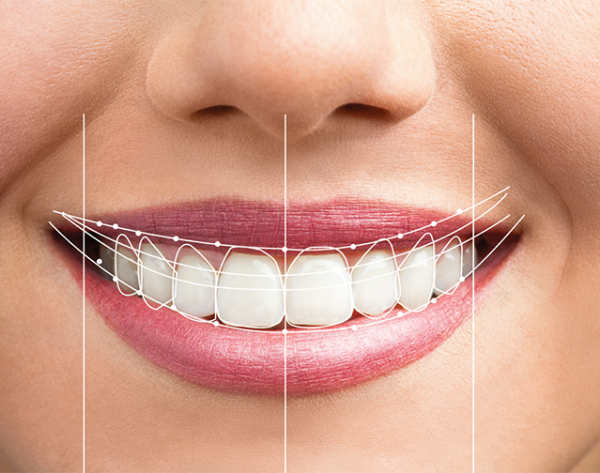Digital Smile Design
The first facial area we pay attention to in someone we meet for the first time is our eyes, and secondly, the smile and teeth of the person in front of us. If we have a problem with our smile or if we are not satisfied with the position of our teeth, this is directly perceived by the person in front of us. Because in such a situation, we need to hide our teeth while talking and smiling. This situation, which negatively affects our self-confidence, also gives a feeling of insecurity to the person in front of us.
If we feel in a similar situation, it would be helpful to get help to solve this problem ourselves. We can only answer how our smile can change and which treatment methods will be right for us with the opinion of a specialist doctor. Now, with minimal applications, very big changes can be achieved, and you can even have the smile you want with your natural teeth without any restorative procedures on your existing teeth. Moreover, while this change takes place, your natural life flow is not affected at all. While your smile becomes aesthetic with transparent corrective appliances, all you have to do is enjoy it. The change in your smile along with your teeth positively affects your self-confidence and many important points in your life. Give yourself a chance, let your world change with your smile.
Smile Design And Orthodontics
DSD (Digital smile design) is the aesthetic arrangements made to improve the teeth aesthetically and functionally. In these arrangements, first of all, after the healthy tooth structure is obtained, the appropriate position and position of the teeth and the aesthetic restructuring of the teeth with prosthetic approaches are provided.
Smile design is not suitable for mouths with unhealthy teeth and gums. First of all, a healthy gingiva should be obtained and this condition should be protected with proper care. Because in the planning made with smile design, the gums should be tight, healthy and non-bleeding in terms of tooth-gingival harmony, and there should be no swelling and redness due to poor hygiene. Providing naturalness in smile design applications is one of the most critical points and this can only be achieved with healthy gums.
The suitability of the position and position of the teeth in the mouth on the dental arch is also very important in terms of the aesthetics and functions of the restorations to be made afterwards.
Dental braces in happy womans mouths who shows by two fingers on brackets on the teeth after whitening. Self-ligating brackets with metal ties and gray elastics or rubber bands for perfect smile. Orthodontic treatment
Although the aesthetics of restorations made in inappropriate tooth positions are not at the desired level, these restorations are not long-lasting as they will face undesirable forces during speaking and chewing.
Here, orthodontic treatments come into play and the teeth are brought to the places where they should be in the arch and properly aligned. In a situation where the tooth alignment is not suitable, no matter what kind of prosthetic approach is used on the teeth, adequate aesthetics cannot be provided.
After the care of all teeth and gums and their alignment in the mouth, a special smile design planning is made for each patient. Here, the position of the lips, teeth and gums is evaluated according to the face, taking into account the patient’s age, gender, character and expectations from the treatment. Questions such as how much tooth and gingival appearance is present during speaking and laughing, should it be increased or decreased, how should the tooth morphology be, are evaluated together with the photograph, x-ray film and measurements taken from the patient. It is the most preferred lamina applications today as prosthetics. The fact that they are very thin and have a high naturalness are the reasons for their preference.



